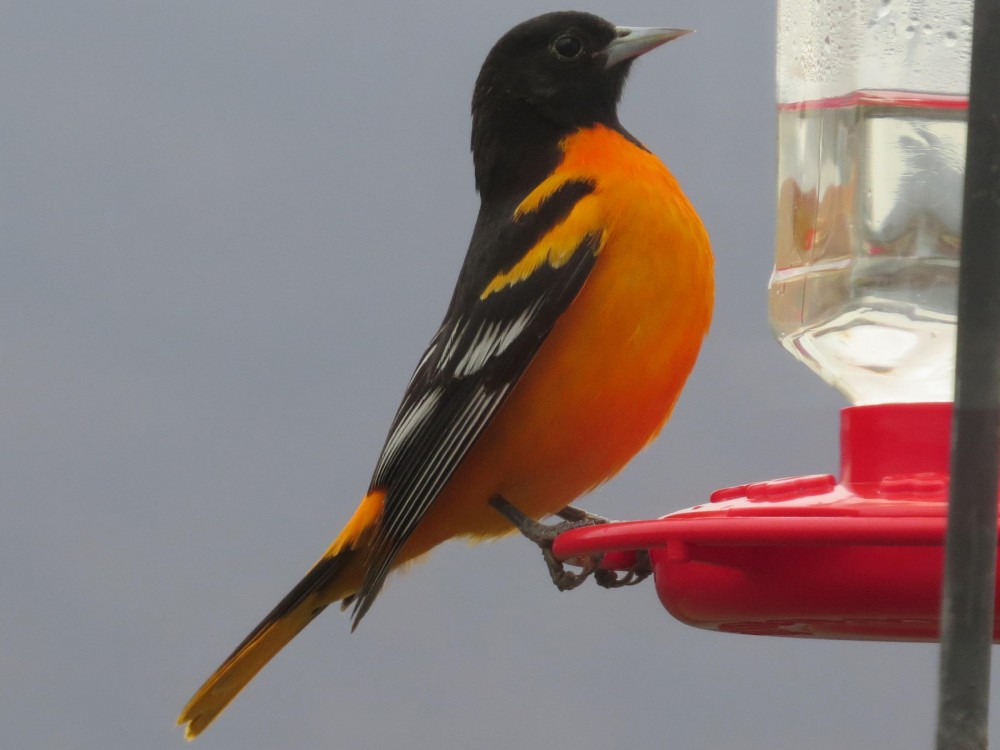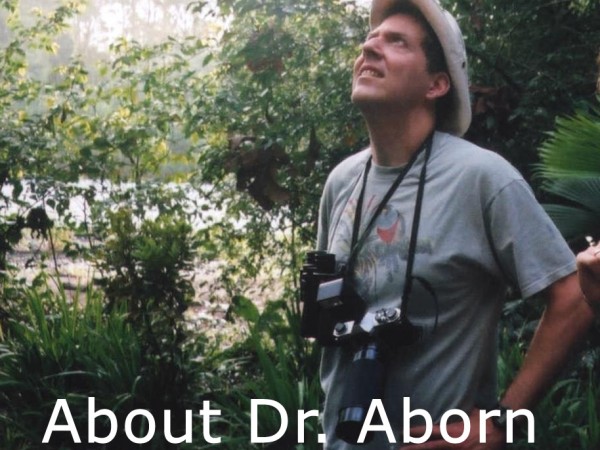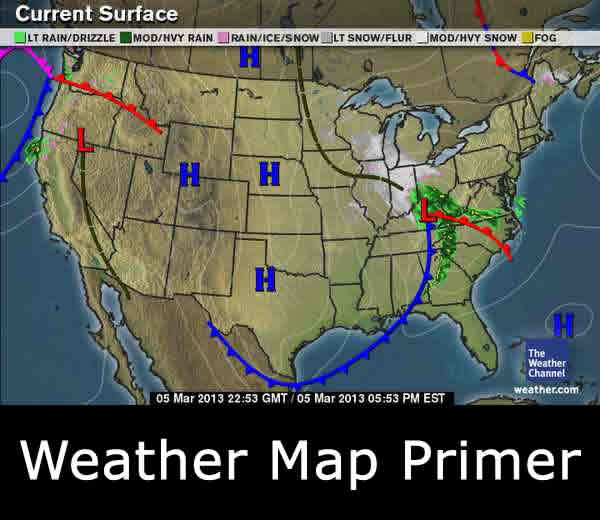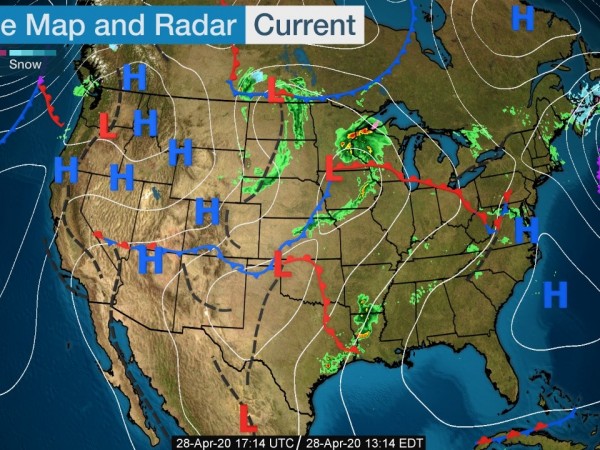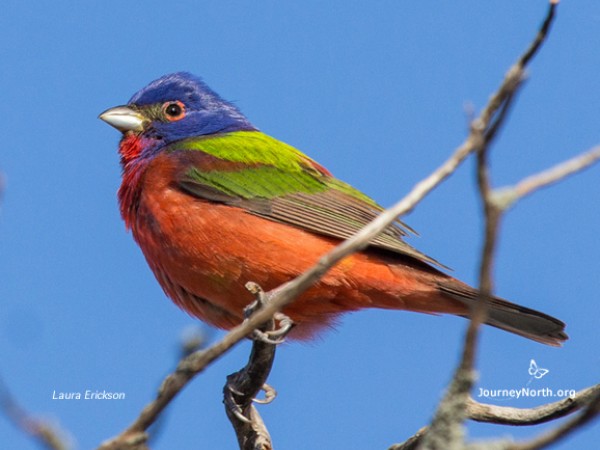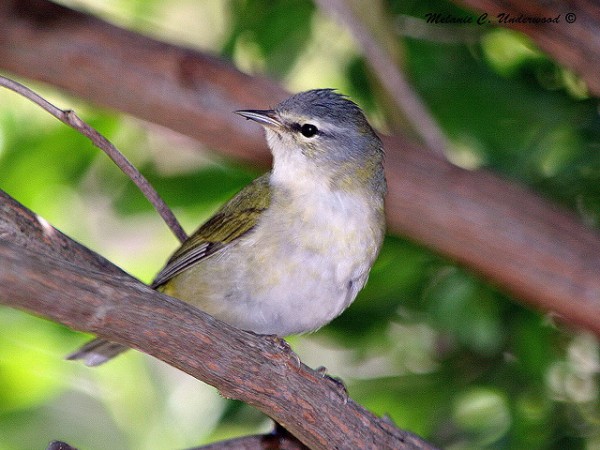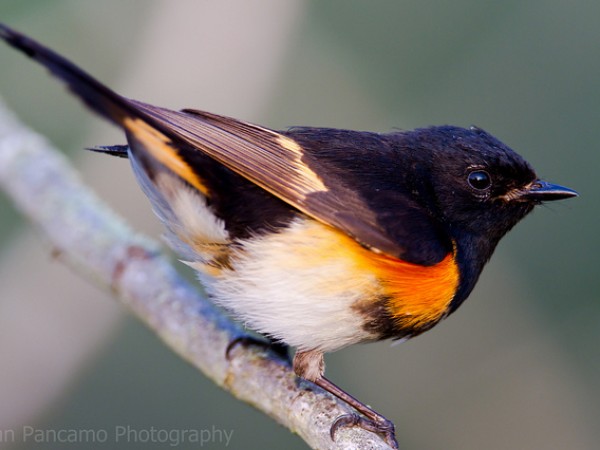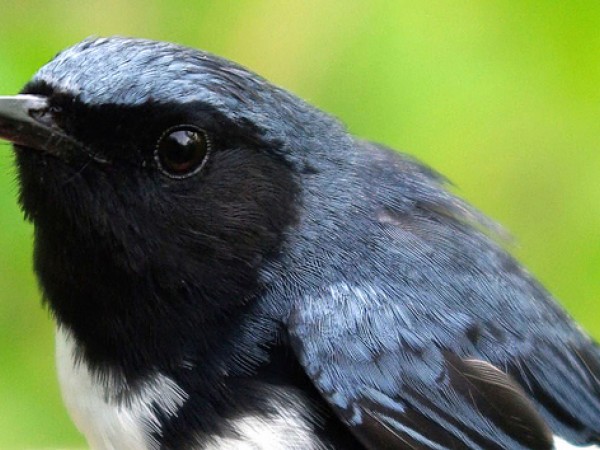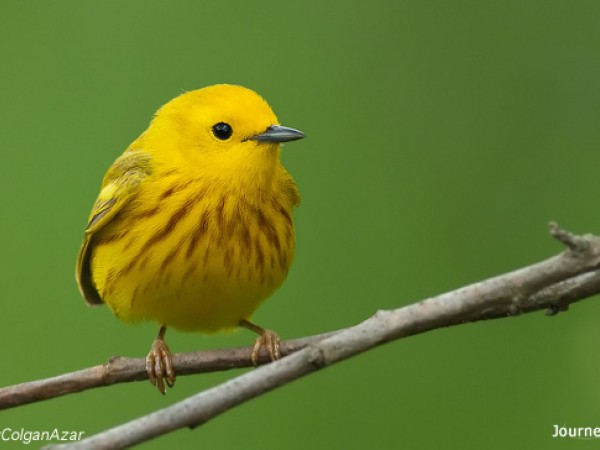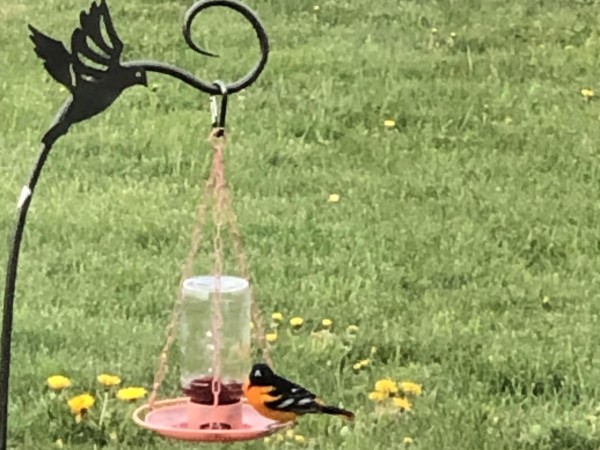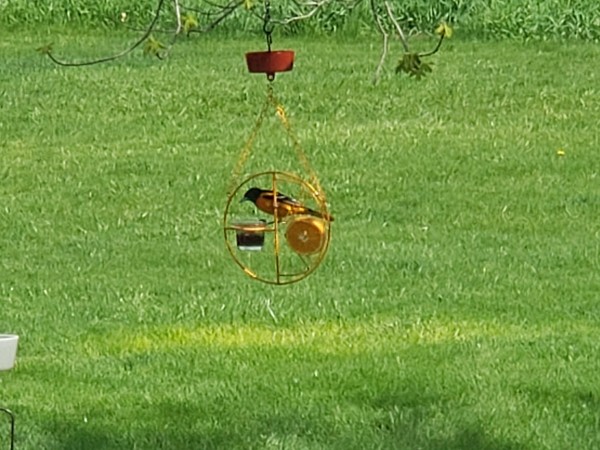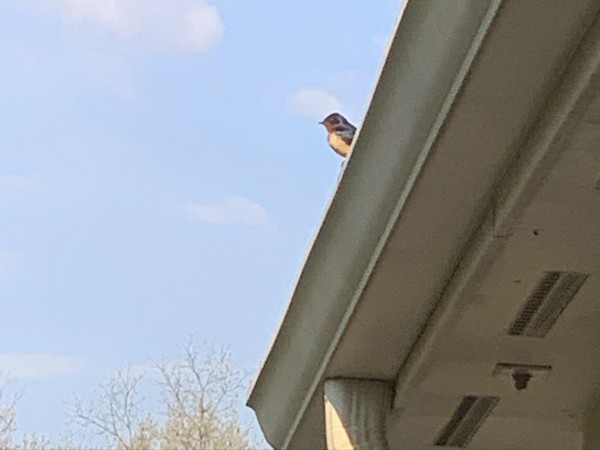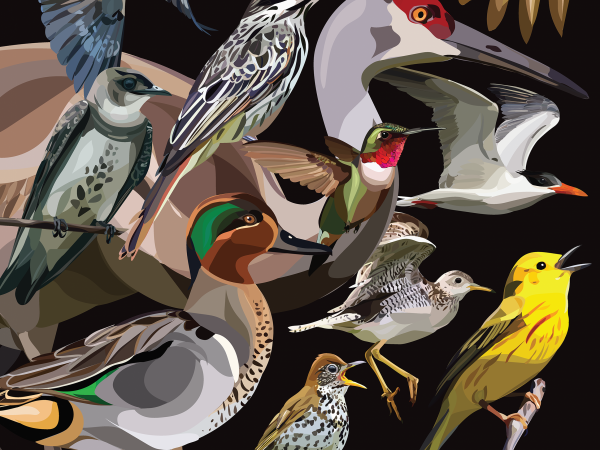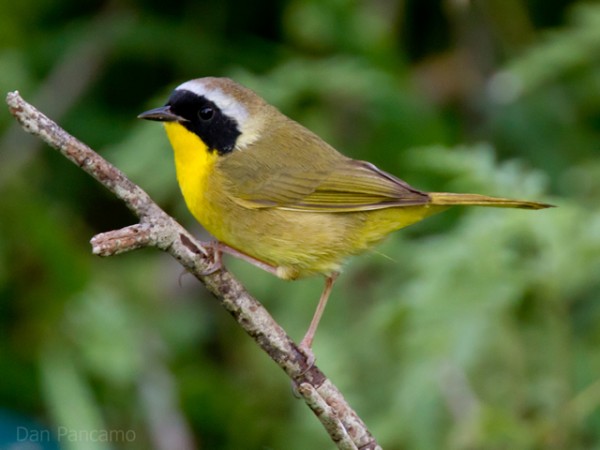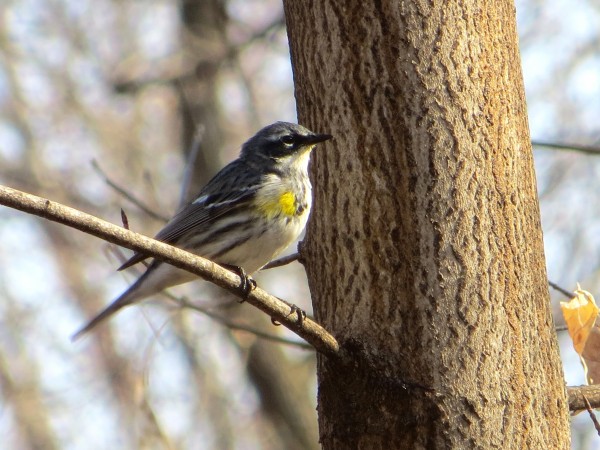Get Your Binoculars Ready!
New species are arriving and the next few weeks will see peak spring migration advancing farther north. Happy birding!
I Am Journey North
Don’t forget to submit your “I am Journey North” selfie! You have plenty of time to submit your photos – this project will run until May 31st. Share what you love about Journey North and the migratory species you help by submitting data, following news updates and/or planting pollinator gardens.
Heather shared, “I love everything about your site. I post barn swallow, hummingbird and oriole sightings. Plus I love to read other people's sightings and pictures on all the maps. It helps to get through a long winter, to read what others see in warmer areas.” (04/26/2020)
Go to Let’s Connect to learn more about this project.
Letter from Dr. Aborn
Dear Journey North Readers,
It was another good week for seeing birds. In my report last week, I mentioned another fallout in the southern US could occur, and that is what happened. The hotspot was the Texas coast. Around Galveston, birders saw up to 1,000 Indigo and Painted Buntings, hundreds of Eastern Kingbirds, Rose-breasted Grosbeaks, Gray Catbirds, Baltimore Orioles, and 40-50 Dickcissels! Birders on Dauphin Island, AL did well too, seeing many Summer Tanagers, Scarlet tanagers, Swainson’s Thrushes, and Gray Catbirds. By the weekend, the weather improved, and many birds moved north in big numbers. In Georgia, Tennessee, and the Carolinas, Rose-breasted Grosbeaks have been showing up everywhere, and Yellow Warblers have also increased. I saw my first Tennessee Warbler, American Redstart, Eastern Wood-Pewee, and Indigo Bunting of the spring. Southerly winds help push Black-and-white Warblers and Black-throated-blue Warblers into Massachusetts. Louisiana Waterthrushes and Blue-headed Vireos made it all the way to Maine! In the Midwest, Ohio saw an influx of Rose-breasted Grosbeaks, Wood Thrushes, Orchard Orioles, Ovenbirds, and Northern Waterthrushes. Ruby-throated Hummingbirds have made it all the way to Michigan.
Out west, migration has also been moving at a good pace. Yellow Warblers are moving through California, along with Yellow-breasted Chats, Cassin’s Vireos, and Hammond’s Flycatchers. The first Western Wood-Pewee was seen in Oregon. Orange-crowned Warblers, Swainson’s Thrushes, and Warbling Vireos were common sights in Washington. In Idaho, the first Calliope Hummingbird – the smallest bird in the United States and the smallest migrating bird in the world – was seen.
Will there be another fallout this week? Maybe. There is a storm system developing across the southern US and the Midwest, which could result in another fallout today and tomorrow. Even though we are just past the peak of spring migration in the south, there are still several more weeks of migration to go. While this week's fallout may not be as large as last week’s, it could still be a pretty good show! Ahead of that front, the eastern US has good flying weather; birds should be able to make significant progress until the storms arrive in a few days. Behind the storm system, the weather is also good. I expect there will be a lot of migration in the western US for the remainder of the week.
Saturday, May 9 is World Migratory Bird Day, a day to celebrate all the birds I have been talking about (and hopefully you have been seeing!) during the past weeks. Normally, there would be celebrations all over the country, with bird walks, exhibits, and presentations at zoos, aquariums, parks, and nature centers. While many of these places are closed right now, there may still be virtual activities you can participate in. Check with you local facilities and see what might be happening. Happy birding!
David Aborn
Chuck Henrikson's Birding Report From UW-Madison Arboretum
"New birds are arriving. The best birds I spotted in the Arboretum this past week were a Blue-gray Gnatcatcher and an American Bittern." Read Chuck's birding report from the Arboretum.
A Flurry of Oriole Sightings
Journey North citizen scientists are submitting a flurry of Baltimore Oriole sightings, and more sightings of Bullock's Orioles are coming in as well.
From Jefferson, OH: Jane shared, "I'm so happy to see my first Baltimore Oriole today on April 28, 2020. I made extra home made steuben grape jelly in the fall for my beautiful orioles and hummingbirds. I hope they like it. Steuben grapes are grown locally here in Jefferson, Ohio." (04/28/2020)
From Donahue, IA: Shaun spotted his first Baltimore Oriole and said it was a, “week earlier for us this year.” (04/28/2020)
From Blair, NE: Richard shared, “Two Baltimore Orioles showed up this morning at my jelly feeder. First of the year. So happy to see them again. Also had the first rose breasted grosbeak yesterday afternoon also at the jelly feeder. He looked exhausted.” (04/29/2020)
Barn Swallows Nesting
Barn Swallows are returning to familiar nesting locations as they prepare to introduce the next generation.
From Mason, OH: Pam noted, “they [Barn Swallows] come back each Spring to nest on our front porch. We now have two nests! They make a mess, but it's worth it.
Common Loons and Red-winged Blackbirds in Canada
Breeding populations of Common Loons and Red-winged Blackbirds are arriving in Canada.
From Spring Lake, AB: Terri shared, “I woke up to the wonderful sound of the LOON this morning!” (04/21/2020)
From Leduc, AB: Kimberly said, “I saw a few red-winged blackbirds today around the retention pond. So lovely to hear their song again.” (04/27/2020)
Keep Reporting
Your reports provide valuable data. Share what bird species you are seeing during peak spring migration. Go to the Journey North sightings page and under the 'Select Species or Event' dropdown menu, select 'Oriole', 'Barn Swallow', 'Loon', or 'Red-Winged Blackbird'. If you are seeing other species not listed, select 'All Other Signs of Spring' under the dropdown menu.
May 9th is World Migratory Bird Day
Mark your calendars! Saturday, May 9th is World Migratory Bird Day. This annual awareness-raising campaign stresses the importance of conserving migratory birds and protecting their habitats. The theme of this year's World Migratory Bird Day is “Birds Connect Our World”. Learn more about World Migratory Bird Day.

